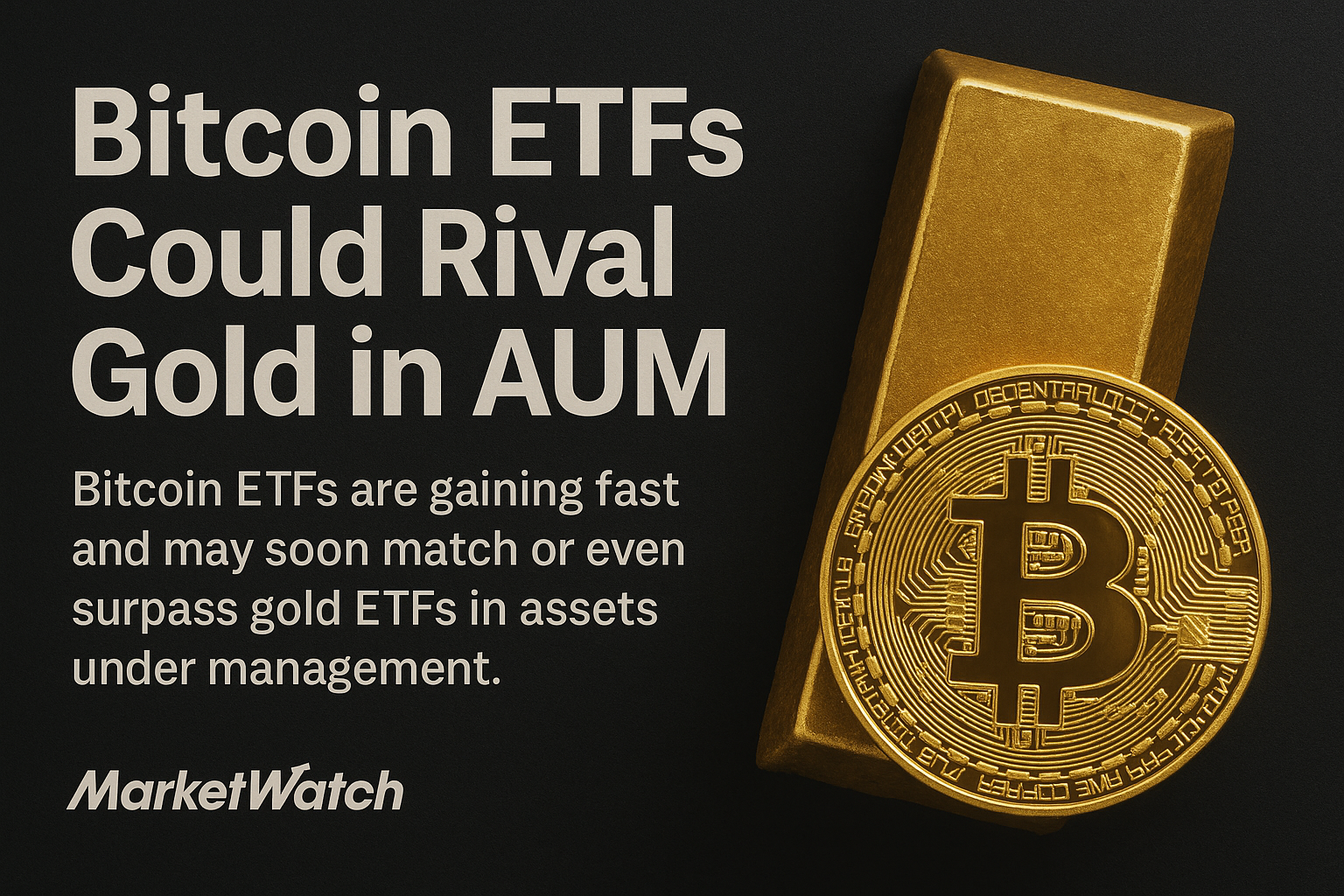For decades, gold has been synonymous with stability and safety. Investors across the world have relied on the precious metal as a hedge against inflation, currency fluctuations, and market volatility. Exchange-traded funds (ETFs) that track gold have grown into some of the largest and most liquid investment vehicles in the world, amassing hundreds of billions of dollars in assets under management (AUM). Yet a new contender is emerging from the digital realm: Bitcoin ETFs.
Since the approval of spot Bitcoin ETFs in major markets, investor interest has surged. According to recent figures, Bitcoin ETFs now collectively manage around $160 billion—a remarkable milestone for a financial product that only began to see mainstream acceptance a few years ago. The rapid accumulation of assets highlights a broader shift in investor behavior: cryptocurrencies, once viewed as fringe or speculative, are increasingly being integrated into traditional portfolios as a legitimate asset class.
The Rise of Bitcoin ETFs
Initially, crypto exposure was largely limited to direct purchases of Bitcoin on exchanges or through complicated private custody solutions. The introduction of futures-based Bitcoin ETFs helped bridge the gap, but they still carried tracking inefficiencies. The watershed moment came when regulators approved spot Bitcoin ETFs, which hold the underlying asset directly. These funds provide investors with the ability to buy Bitcoin exposure through standard brokerage accounts without dealing with wallets, keys, or exchanges.
The convenience, transparency, and familiarity of ETFs have proven irresistible to institutions and retail investors alike. Pension funds, hedge funds, and family offices have all increased allocations to these products. The result? Record inflows and a steadily climbing AUM figure that now puts Bitcoin ETFs on the cusp of rivaling long-established gold ETFs.
Gold vs. Bitcoin: A Changing Landscape
Gold ETFs, such as SPDR Gold Shares (GLD), still dwarf their crypto counterparts in total assets, with AUM in the hundreds of billions. But Bitcoin’s momentum is striking. If inflows continue at the current pace, analysts project that Bitcoin ETFs could match or even surpass gold ETFs within the next few years.
This development signals more than just a competition between two asset classes—it represents a broader redefinition of what constitutes a “safe haven.” Gold has a track record spanning millennia, but Bitcoin offers unique attributes that appeal to a new generation of investors. It is borderless, divisible, and digital, making it more accessible in an increasingly online and globalized economy.
Institutional Adoption Accelerates
Another key factor driving the surge in Bitcoin ETF assets is the wave of institutional adoption. Major financial firms are not only offering these products to clients but also incorporating Bitcoin into their own strategies. The legitimization provided by regulated ETFs reduces concerns about custody, compliance, and transparency that previously held back large-scale participation.
Additionally, macroeconomic conditions such as rising debt levels, persistent inflation, and currency volatility have increased demand for nontraditional stores of value. While gold has historically filled this role, Bitcoin is emerging as a viable complement—or even substitute—for the precious metal in diversified portfolios.
What This Means for Investors
For retail investors, the rise of Bitcoin ETFs offers a new way to gain exposure to cryptocurrency without the complexity of self-custody. For institutional players, it represents a bridge between traditional finance and the digital asset ecosystem. The growing parity between Bitcoin and gold ETFs in AUM could also influence broader market dynamics, including liquidity, volatility, and pricing.
Moreover, the competition may push fund managers to innovate—offering lower fees, improved liquidity, and even new hybrid products that combine different alternative assets. As more capital flows into crypto-based funds, the infrastructure and regulatory clarity around digital assets will likely continue to improve, reinforcing the cycle of adoption.
Looking Ahead
While gold’s status as a timeless safe-haven asset is unlikely to disappear overnight, the rapid rise of Bitcoin ETFs is impossible to ignore. In a world where digital transformation is reshaping everything from banking to supply chains, investors are rethinking their definitions of security and value.
If current trends hold, the headline “Bitcoin ETFs Rival Gold in AUM” may soon move from speculation to reality. Such a milestone would not only validate Bitcoin’s role in the financial system but also mark a turning point in the evolution of global investment markets.




